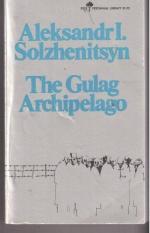|
This section contains 778 words (approx. 2 pages at 400 words per page) |

|
Perspective
Aleksandr Isayevich Solzhenitsyn is a Nobel Prize-winning Russian author who in The Gulag Archipelago includes snippets of his own Gulag experiences in 1945-54, but insists it is not his autobiography. Instead, it contains memories of 237 eyewitnesses and the results of reading 36 Soviet authors. As he explains near the end of Part 2, in prison one learns that the world is small indeed. It is a treat every time a veteran zek (prisoner) enters a cell—or when one enters one oneself—with unworried smile and expansive gesture. The prisoners' "telegraph system" works by attentiveness, memory, and chance meetings. He makes clear that the book contains no fictitious people or events. He withholds the book for many years after completing it, but when State Security seizes the manuscripts, he authorizes its publication in the West—as an obligation to the dead for whom he speaks.
Nevertheless, inclusion...
|
This section contains 778 words (approx. 2 pages at 400 words per page) |

|




